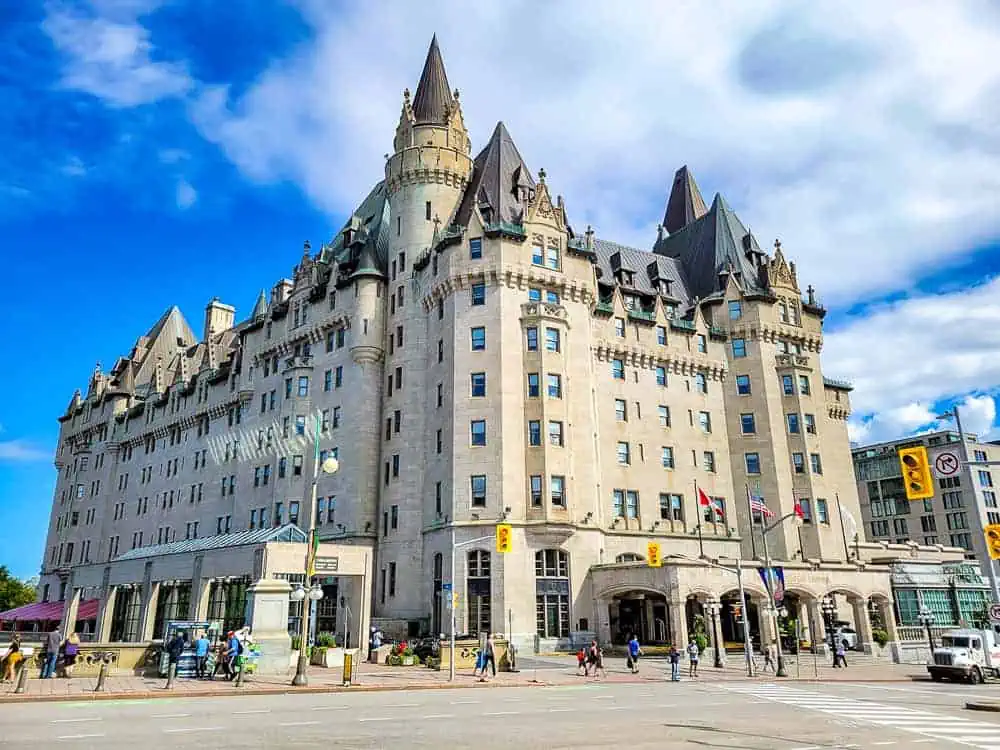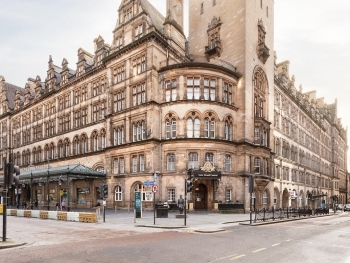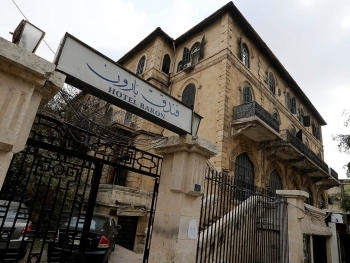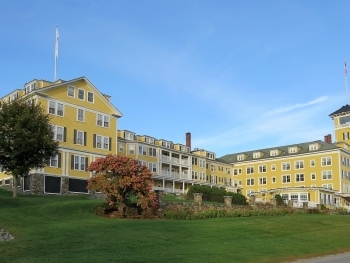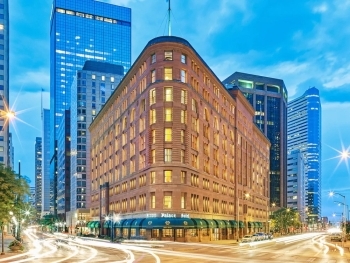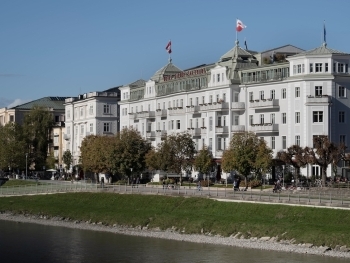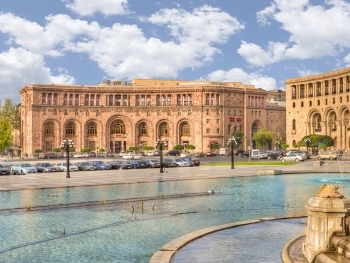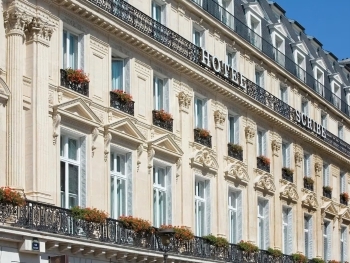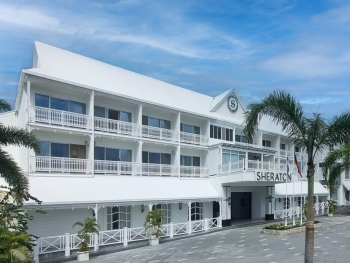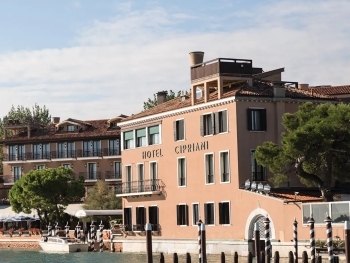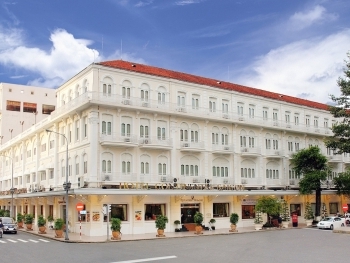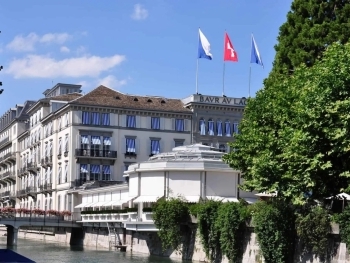The Fairmont Château Laurier, an architectural gem in Canada's capital city, Ottawa, is a testament to the country's rich history and elegance. Nestled between the Rideau Canal and the Parliament Buildings, this grand hotel has been a significant part of Ottawa's landscape since the early 20th century. With its castle-like design and storied past, the Château Laurier is not just a hotel but a symbol of Canadian heritage.
Historical Background
Early Conception and Construction
The idea for the Château Laurier was born during a period of rapid development and expansion in Canada. The hotel was commissioned by Charles Melville Hays, the then General Manager of the Grand Trunk Railway of Canada. Hays envisioned a series of grand hotels across Canada, serving as luxurious accommodations for travelers and promoting the railway.
Construction of the Château Laurier began in 1909 and was completed in 1912, costing approximately $2 million. The hotel's design was the brainchild of Ross and Macfarlane, a renowned architectural firm. They drew inspiration from French Gothic architecture, evident in the turrets, dormer windows, and steeply pitched roofs that give the hotel its distinctive château-like appearance.
Tragic Inauguration
Tragedy struck just days before the hotel's scheduled opening. Charles Melville Hays was among the passengers who perished in the sinking of the RMS Titanic on April 15, 1912. The hotel's opening was subsequently postponed by several weeks and, when it finally did open on June 1, 1912, it was dedicated to Hays' vision and memory.
Architectural Marvel
Design and Structure
The Château Laurier's design is a stunning example of Châteauesque architecture, which was popular among Canadian railway hotels in the late 19th and early 20th centuries. The building's limestone exterior, with its intricate detailing and imposing presence, makes it a standout landmark.
The hotel's interior is equally impressive, featuring opulent public spaces adorned with rich woodwork, marble floors, and elegant chandeliers. The grand lobby, with its high ceilings and stately columns, sets the tone for the luxury and refinement that defines the Château Laurier.
Expansion and Renovations
Over the years, the Château Laurier has undergone several expansions and renovations to maintain its status as a premier hotel. In 1929, a seven-story addition was completed, adding more guest rooms and modern amenities. Further renovations in the 1980s and early 2000s ensured that the hotel could meet contemporary standards while preserving its historic charm.
Cultural and Historical Significance
Political and Social Hub
The Château Laurier has long been a hub for political and social activity in Ottawa. Its proximity to the Parliament Buildings has made it a preferred lodging for politicians, dignitaries, and celebrities. The hotel has hosted numerous historical events and important guests, including heads of state, royalty, and film stars.
Role in Canadian Media
The hotel also played a pivotal role in the development of Canadian media. For many years, the seventh floor of the Château Laurier housed the offices of the Canadian Broadcasting Corporation (CBC). This location became the birthplace of numerous iconic Canadian radio and television programs.
Modern Day Château Laurier
Luxurious Accommodations
Today, the Fairmont Château Laurier continues to offer luxurious accommodations with a blend of historic charm and modern comfort. The hotel boasts over 400 elegantly appointed guest rooms and suites, many of which offer stunning views of the Parliament Buildings, Rideau Canal, or the Gatineau Hills.
Dining and Amenities
The hotel's dining options are among the finest in Ottawa. Wilfrid's Restaurant, named after Sir Wilfrid Laurier, the seventh Prime Minister of Canada and the hotel's namesake, offers a sophisticated dining experience with a focus on regional cuisine. Zoe's Lounge, renowned for its afternoon tea service, provides a more relaxed yet equally refined atmosphere.
Guests can also enjoy a range of amenities, including a state-of-the-art fitness center, an indoor pool, and extensive meeting and event spaces. The Château Laurier is also connected to the Rideau Centre, one of Ottawa's premier shopping destinations, via an underground passage.
Commitment to Sustainability
The Fairmont Château Laurier is committed to sustainability and environmental stewardship. The hotel has implemented numerous initiatives to reduce its carbon footprint, including energy-efficient lighting, water conservation measures, and waste reduction programs. These efforts have earned the hotel several green certifications and awards.
The Fairmont Château Laurier stands as a monument to Canada's history and architectural grandeur. Its storied past, from its tragic beginnings to its role as a political and social epicenter, adds to its allure. Today, it remains a symbol of luxury and elegance, offering guests a unique blend of historic charm and modern comfort. The Château Laurier is not just a place to stay; it is a destination in itself, capturing the essence of Ottawa and Canadian heritage.
